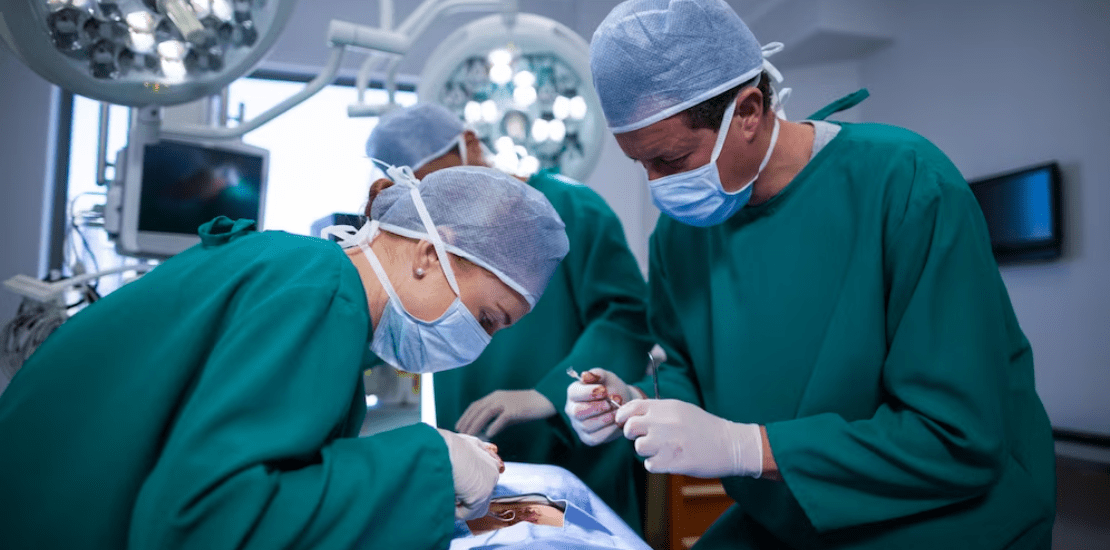- July 7, 2023
- Posted by: admin
- Category: Laparoscopy

Laparoscopy is a complex surgical procedure that helps doctors to find out what is wrong with the body. It is a highly successful procedure though the doctor suggests it only when it is highly needed to find out the hidden problems.
During Infertility treatment, the doctors may suggest you have a Laparoscopy in Varanasi surgery to find out the cysts, atypical endometriosis lesions, or tumors. Several infertility tests sometimes fail to recognize them so your doctors may ask to consider Laparoscopy surgery.
In this article, we’re going to discuss the surgery. If your doctor has suggested this and you want a basic introduction to this subject, this article is an answer to all your questions.
What is Laparoscopy?
Laparoscopy is a complex surgical procedure that doctors use to view inside the patient’s body, generally the abdomen. The doctor uses an instrument called a laparoscope. It is a small thin tube with a camera fit at its end and a light source attached. The setting allows a doctor to view the biopsy samples and examine the problems related to the abdomen without making a large incision. It is also famous as Keyhole Surgery or Minimal Invasive Surgery.
Here is something to take note of. It will not be very useful to take others’ experience as your base. Laparoscopy depends on several factors that are not static and vary from person to person. All patients with this surgery tell a different experience story. Some such factors are as follows.
– Extent of Surgery
– Expertise of the Surgeon
– The Facility
– The Nursing Staff
– Length of Surgery
– Patient’s responsiveness to pain & healing procedure.
How Does the Procedure Work?
First, the doctors will inject anesthesia and numb your body to pain. Then they will cut an incision near your belly button and fill the abdomen with CO2 gas. CO2 will fill up the abdomen area and will lift it above the internal organs to give a clear view into the camera. The doctors then insert the Laparoscope tube that is equipped with light & a tiny camera. A patient may need one or two more small incisions to insert additional instruments to move aside the organs.
During the complete procedure, the doctors view the pelvic organs. The purpose is to find obvious or atypical endometriosis lesions, endometriosis-filled cysts, scarring, adhesions, tumor, or other abnormalities. Doctors use laparoscopy also for examining the uterus.
When Should You Opt for a Laparoscopy Treatment?
Laparoscopy is not suggested very commonly. Though it is safe for all doctors treat it as their last tool to find out the health issues. When all the other tests such as MRI scans, CT scans, Ultrasound, etc. fail to recognize the problem, they head toward the laparoscopy.
Note that laparoscopy is to find out the problems in the abdomen organs. They are as follows.
– Appendix
– Stomach
– Liver
– Gallbladder
– Pancreas
– Intestine
– Pelvis
– Uterus
– Spleen
Benefits of Laparoscopy:
Laparoscopy has several benefits including less pain and less bleeding. The surgery helps your doctor to find out the exact health problem in your body. The diagnosis accuracy makes the surgery super successful and helps the doctors to understand the essential treatment to carry on with the patient.
This surgery helps doctors to remove an ectopic pregnancy. Your child grows outside of your uterus wall in this pregnancy. It can be life-threatening to you and your child’s life. The doctors can also remove the uterus in the case of treating uterine cancer and stop abdomen bleeding.
The surgery also leaves with several keynote benefits such as:
– Small scars
– Less pain
– Minimal medication required
– Less bleeding
– Minimal stay in the hospital
– Fast recovery
What are the Risks Associated with Laparoscopy?
Like all other surgical treatments, laparoscopy also comes with associated potential risks. This surgery is a complex one and requires expertise to conduct. This surgery can leave you with infections, bleeding, and some other unique risks associated. But for your relief, these risks are very rare and 1% of the total number of surgeries show such a response.
– The surgery can cause injuries to the internal organs such as bowel or bladder.
– It can lead to internal bleeding as a result of blood vessel injury.
– Bruising of the belly or Hematoma.
– Shoulder pain is a common side-effect of laparoscopy.
– The CO2 gas inside can cause bloating as well.
– Heart & Lung diseases are rare among the rarest risks with laparoscopy.
Laparoscopy is safe but doctors avoid it generally. Not many are fit for it. The purpose of this surgery is to diagnose the body from the inside and recognize the problem. Though doctors suggest this surgery only when other tests such as ultrasound fail.
Procedure for the Laparoscopy Surgery:
We divide the whole surgery into three segments to give you a clear idea about it. The sections are Before the Surgery, During the Surgery, and After the Surgery. Read all to get a clear understanding of what you should do for a successful laparoscopy in a gynae laparoscopy hospital in Varanasi, India.
Before The Surgery:
- Submit the details of your medical history.
- You may have to undergo several blood tests.
- The doctor will explain the laparoscopy in detail to ensure that you’re aware of what’s coming.
- Sign a consent form to proceed with the surgery.
- Avoid drinking & smoking, and eat 12 hours prior to the operation.
- Be ready for the operation now.
During the Surgery:
- Wear something very light such as a gown and no jewellery.
- Lie down and relax on the operation bed.
- An IV line will be implanted.
- Doctors will inject anesthesia into your body for you not to feel discomfort.
- Doctors may consider additional drugs or fluid via the IV to check your heart rate & oxygen.
- An incision is now made to insert the cannula.
- The cannula will help to insert the CO2 gas into the body.
- The laparoscope will be inserted and your internal organs will be seen on the monitor.
- Some more incisions may be needed for a successful procedure of the surgery.
After the Surgery:
- Make sure someone from your family or close friend is with you in the hospital during the Laparoscopy treatment in Varanasi.
- Doctors will keep you under close observation for a few hours.
- Your blood pressure, oxygen levels, and pulse rate will be checked.
- You will get the discharge once you’re awake and show no complications.
At Home:
- Keep your incision clean & dry.
- Follow the instructions your doctor gave you about bathing.
- Your shoulders may feel sore for a few days. Though this is temporary.
- You may have slight pain in the incision areas.
- Take your prescribed medication on time.
Conclusion:
Laparoscopy is a complex but highly accurate procedure for the diagnosis and treatment of abdomen health issues. Though we can’t say whether it is better than open surgery as both depend on the medical condition & history of the patient.
If you’re suffering from any laparoscopy issues and are suggested for a laparoscopy surgery by your doctor, consider the best laparoscopy in Varanasi – IVF New Life as your perfect destination. Here you will get an outstanding environment, supporting medical staff, and experts in the field.
